A significant portion of the correspondence and questions I receive have to do with unique physical features on various ships, ground vehicles, and especially aircraft and what they do. One of the most interesting aspects of modern military technology is the slight differences among evolutions and sub-types of a particular weapon system. In some ways, these small alterations tell a rich story of changes in technological know-how, tactics, and the ever-morphing nature of threats. We write in detail about these unique features and subsystems all the time, but one structure on a particular aircraft variant seems to draw a lot of attention and questions, at least based on what readers ask me about. That is the bulbous nub on the nose of the enigmatic Block 60 F-16E/F “Desert Falcon” developed specifically for the United Arab Emirates Air Force.
The F-16E/F is an F-16, but it is one unlike any other F-16 variant in the world. The aircraft is more of a redevelopment of sorts the F-16 than just another incremental upgrade. Originally, when the program spun up in the 1990s, with an order eventually being placed for 80 advanced F-16s in 1998, the aircraft was going to be an even more drastic redesign of the F-16, similar to how Japan’s F-2 fighter came to be, but with a large delta wing and other aerodynamic tweaks.
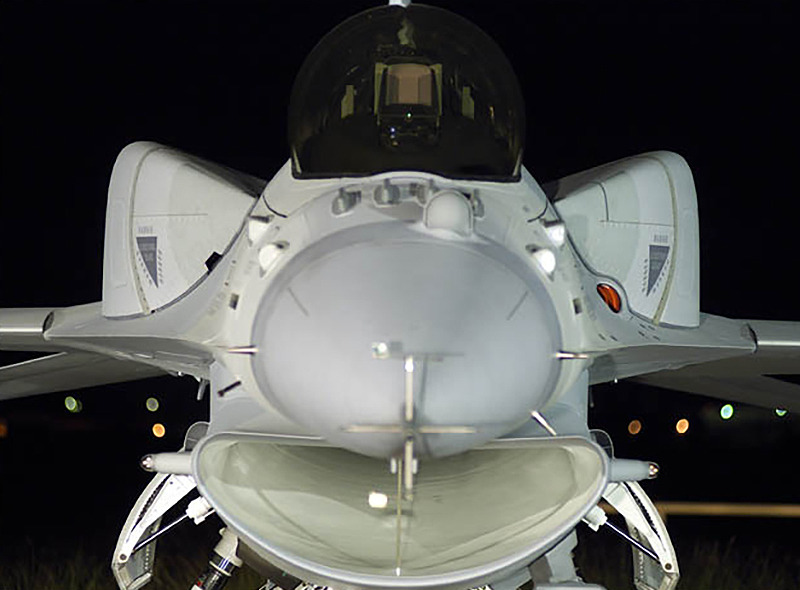
That ambitious concept was jettisoned in favor of drastically enhancing the Block 50/52 F-16C/D Viper. In the end, just developing the F-16E/F cost the UAE a whopping $3B, with the first jet taking to the skies in December of 2003. Years of testing and training would follow, with the first aircraft delivered to the UAE beginning in May of 2005. In total, the force consists of 55 single-seat F-16Es and 25 two-seat F-16Fs, the latter of which include fully missionized rear cockpits. Now very mature, the F-16E/F fleet is already undergoing a series of upgrades.

The Block 60 includes a load of enhancements. It has conformal fuel tanks like some of its late-block predecessors, but its F110-GE-132 General Electric turbofan puts out 32,000lbs of thrust. That’s 3,000lbs more than the Block 50’s F110-GE-129. It was built with Northrop Grumman’s AN/APG-80 Active Electronically Scanned Array (AESA) radar system, which was at the time of introduction into service, and still is, incredibly capable. You can read about the benefits of fighter-sized AESAs in this past piece of ours, but for the F-16, which is something of the hallmark of multi-role fighters, being able to perform multiple modes, such as air-to-air and air-to-ground, simultaneously and seamlessly equals a massive leap in capability and situational awareness.
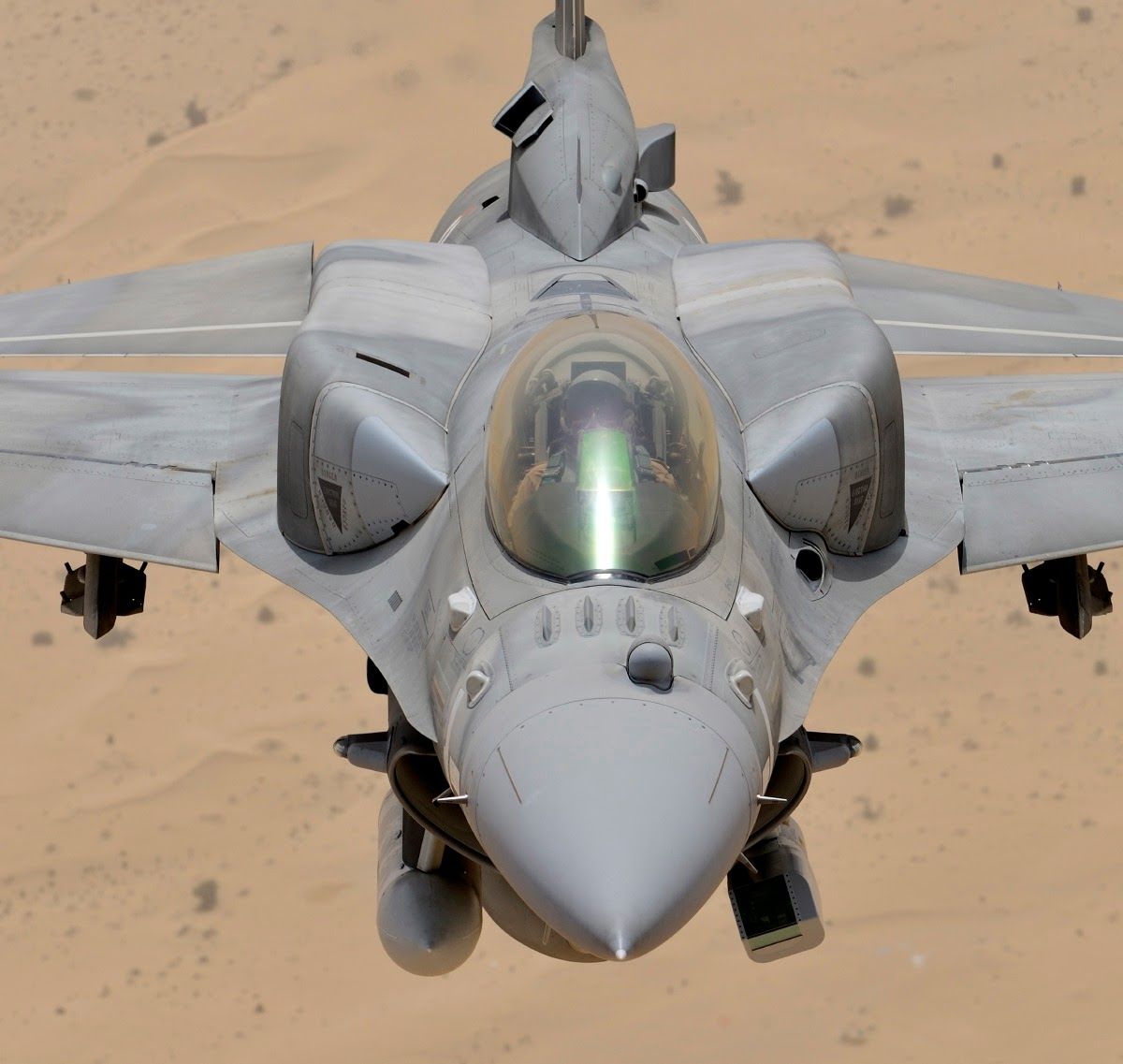
The jet also has an advanced defensive countermeasures and situational awareness system called the Falcon Edge Integrated Electronic Warfare Suite (IEWS). It includes an active jamming system and passive electronic support measures that provide enhanced situational awareness of radio-frequency threats in the jet’s vicinity. It can geolocate those threats and allow the F-16E/F to rapidly target them with precision-guided munitions. It has no less than eight expendable countermeasure dispensers that are tied into its self-defense system and it is also capable of controlling towed fiber-optic decoys. It isn’t perfectly clear, but the Block 60 appears to have been built with a missile approach warning system, or at least the ability to be fitted with one, as well.
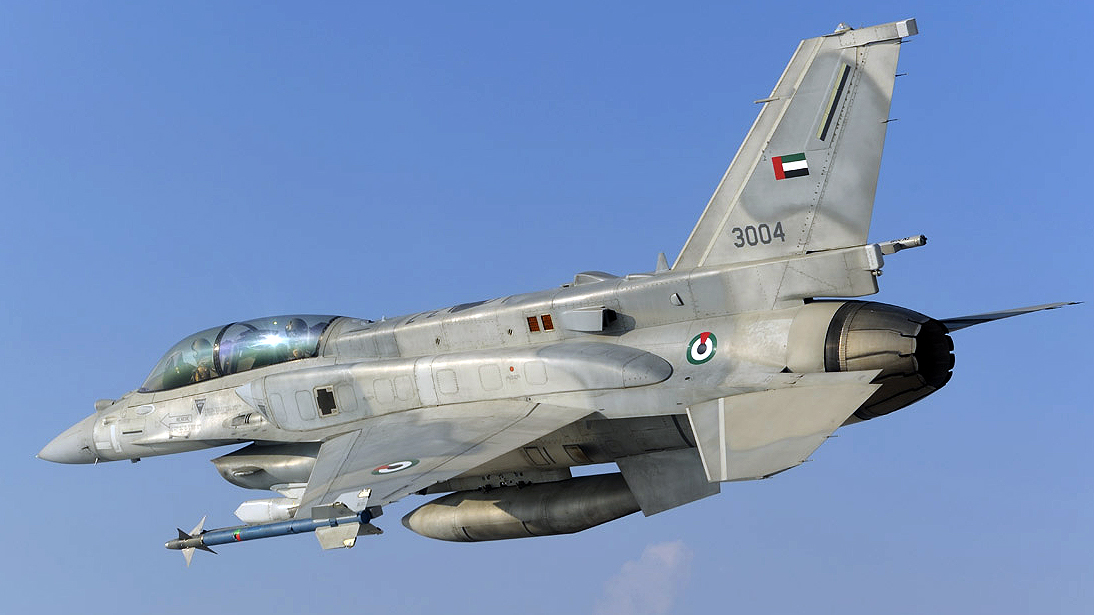
The Block 60’s cockpit was also a big upgrade over the Block 50/52. Three large flat panel displays replace the old smaller multi-function and analog display layout. A wide-angle HUD with holographic video projection capability is also fitted. The rear cockpits of the F models are built for two-crew combat operations, with displays and interfaces to support it. Advanced data links and highly-secure, beyond-line-of-sight communications systems are also installed on these jets, as well. The Desert Falcon was built with a new and greatly improved environmental control system (ECS) to reliably cool all these electrical systems even in the extreme desert heat.
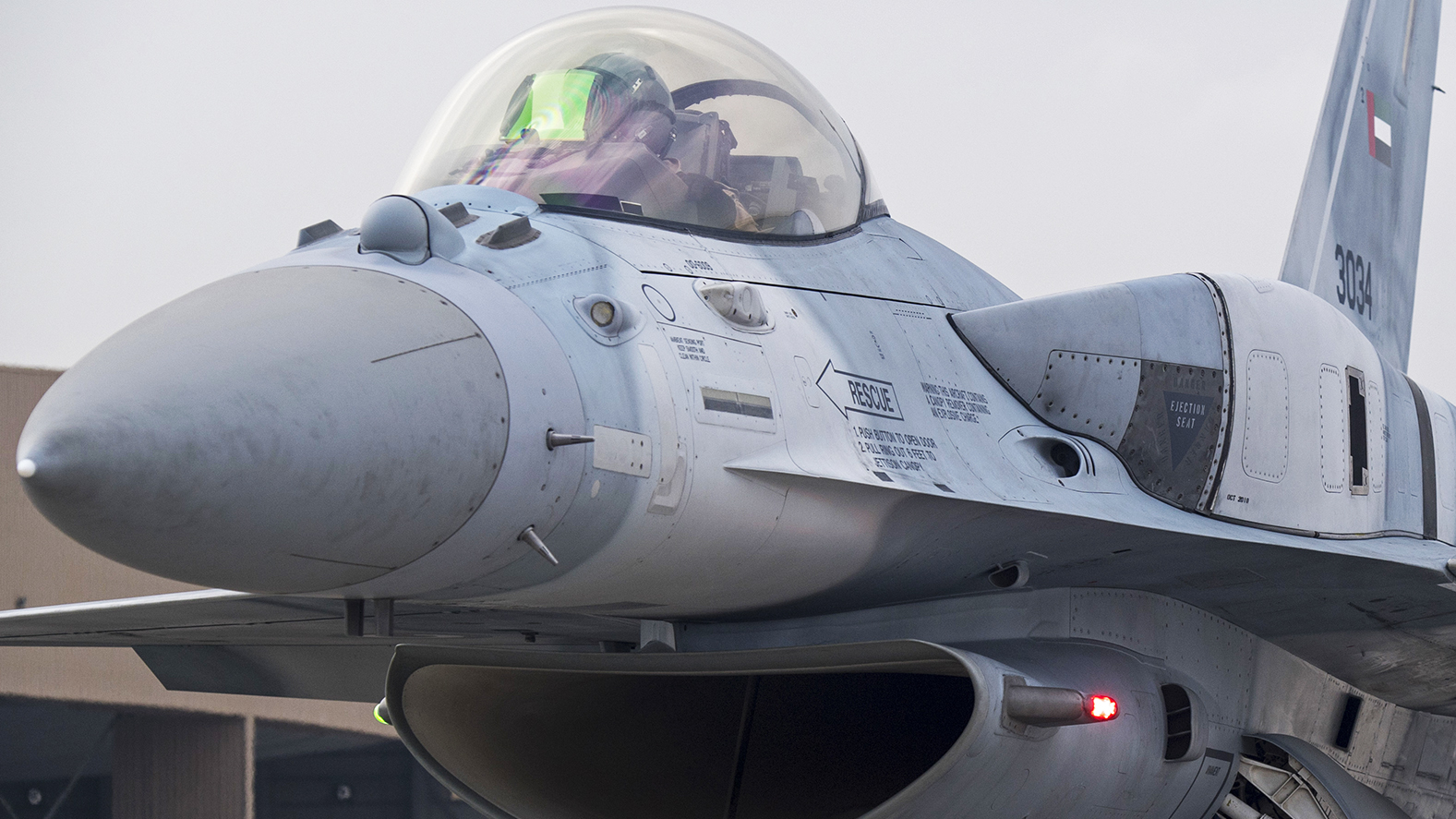
Finally, a huge array of advanced weaponry can be carried by the F-16E/F, including standoff weapons like the Small Diameter Bomb, Joint Stand-Off Weapon, and Hakim missile.
I could keep going, but you get the idea. These are the most capable F-16s in the world.
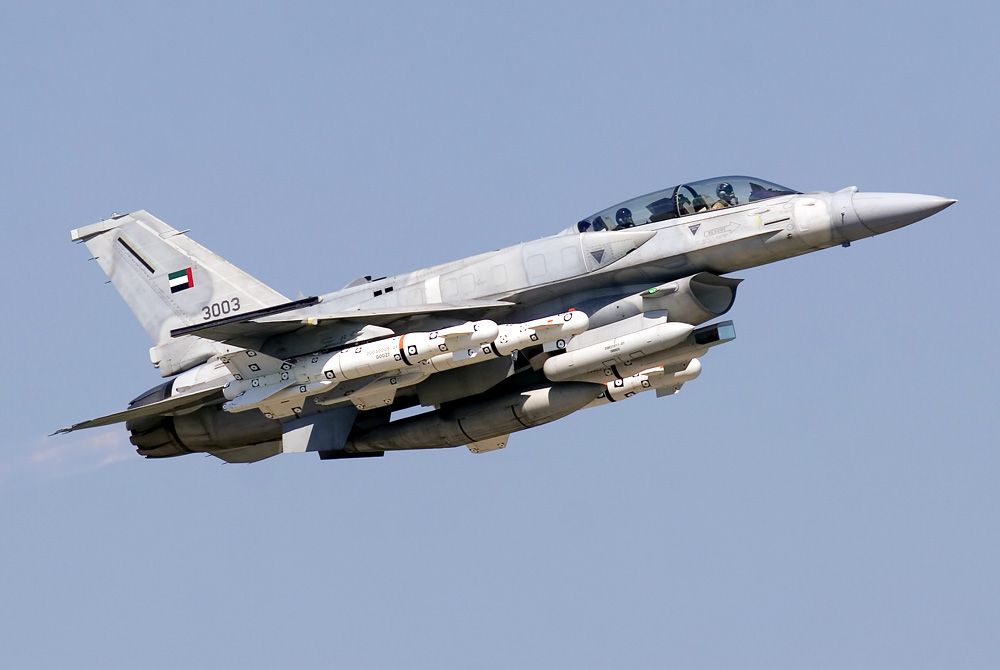
Yet one of the Desert Falcon’s most unique systems is its infrared targeting and navigation suite. Known as the AN/AAQ-32 Internal FLIR Targeting System (IFTS), it manifests itself externally in two areas. One is the targeting pod that is installed on one of its two intake pylons. It was derived from Northrop Grumman’s AN/AAQ-28 LITENING targeting pod and acts in a similar fashion to other advanced targeting pods, providing stabilized mid-wave infrared and electro-optical video feeds, as well as laser range-finding, spot tracking, pointer, and targeting functions. Although primarily designed for air-to-ground applications, it can be used for air-to-air search, track, and identification purposes, as well. You can read about this capability and how it works in this past article of ours.
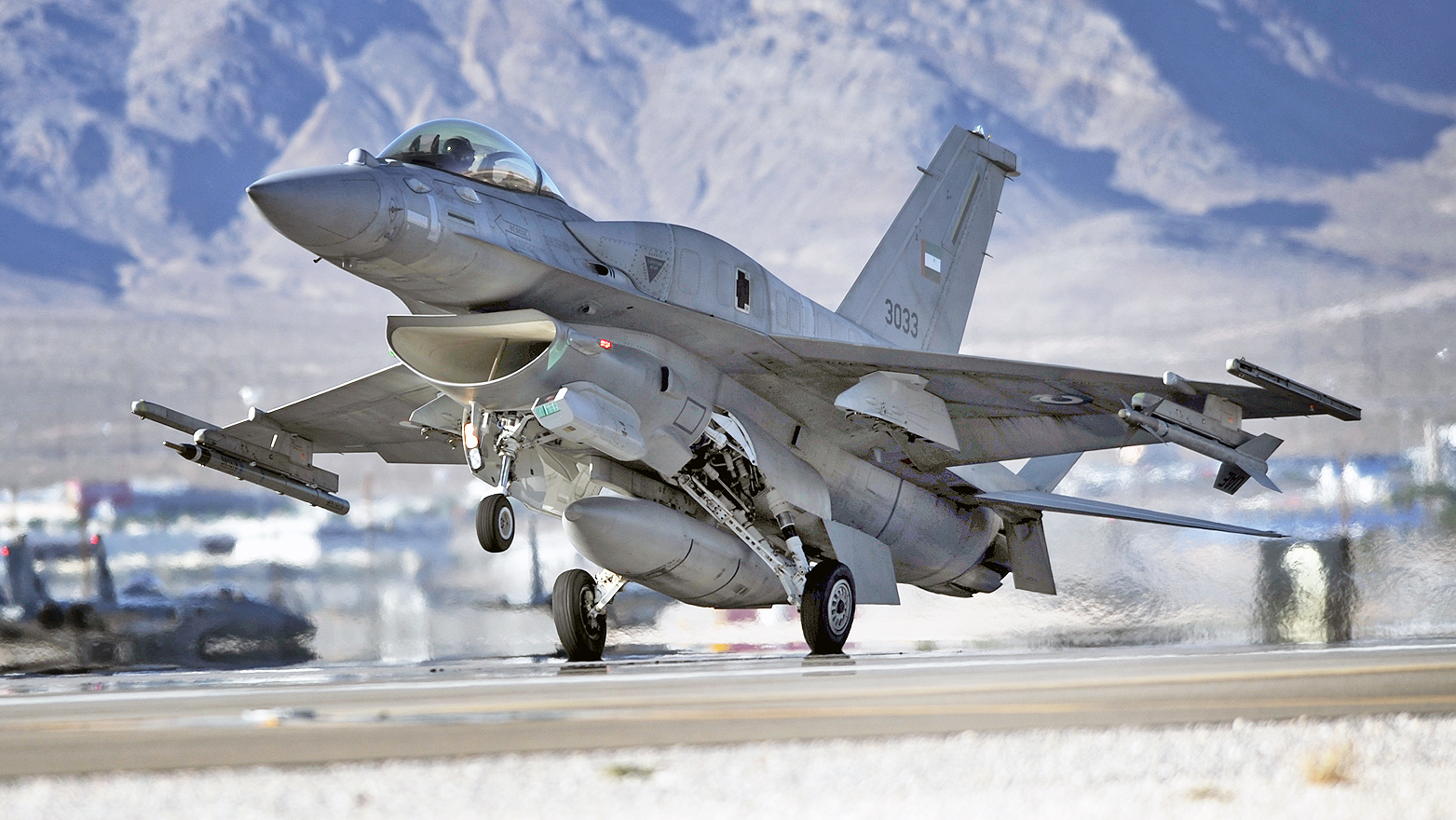
Also part of the IFTS is the round nub on the F-16E/F’s nose—the same one that has drawn a lot of interest from readers. Some have posited that this is an infrared search and track system (IRST), but it isn’t. Others thought it was an updated version of Texas Instruments Falcon Eye FLIR system that began development in the 1980s. That system was primarily intended to give pilots the ability to see in the night prior to the integration of night vision goggles into tactical fast jets, which came in the 1990s.
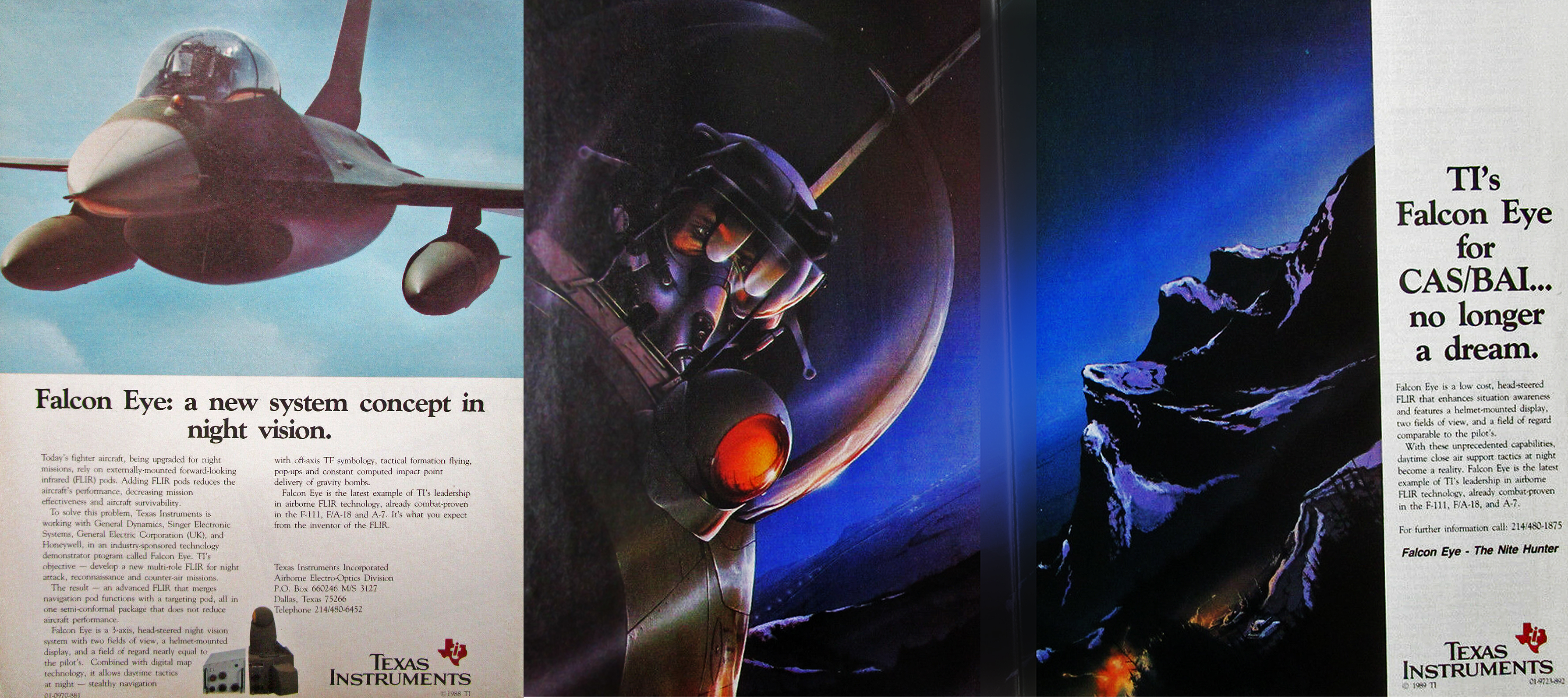
Similar to the Pilot Night Vision Sensor on the AH-64A Apache, Falcon Eye would swivel around to where the pilot was looking and project that video into a helmet-mounted display, which were somewhat ungainly at the time. Falcon Eye was tested extensively and was seen as an especially attractive potential feature for a battlefield interdiction and close air support version of the F-16, but neither it or the “A-16” really caught on. As mentioned a moment ago, night vision goggles and podded systems like the Low Altitude Navigation and Targeting Infrared Red for Night (LANTIRN) system would become commonplace and would satisfy the requirement.
LANTIRN, in its full installation, is really two pods. The AN/AAQ-14 is the targeting pod with similar capabilities as the LITENING pod described above, albeit in an earlier form. The AN/AAQ-13 is the LANTIRN navigation pod, which housed a terrain-following radar and a staring infrared sensor that would be used to project a view of where the aircraft was going on the HUD in the cockpit. Aircraft like the F-15E and the F-16C/D Block 40 had special raster-scan HUDs that could project the video properly. The system works to also project terrain-following steering cue symbology onto the infrared video displayed on the HUD.

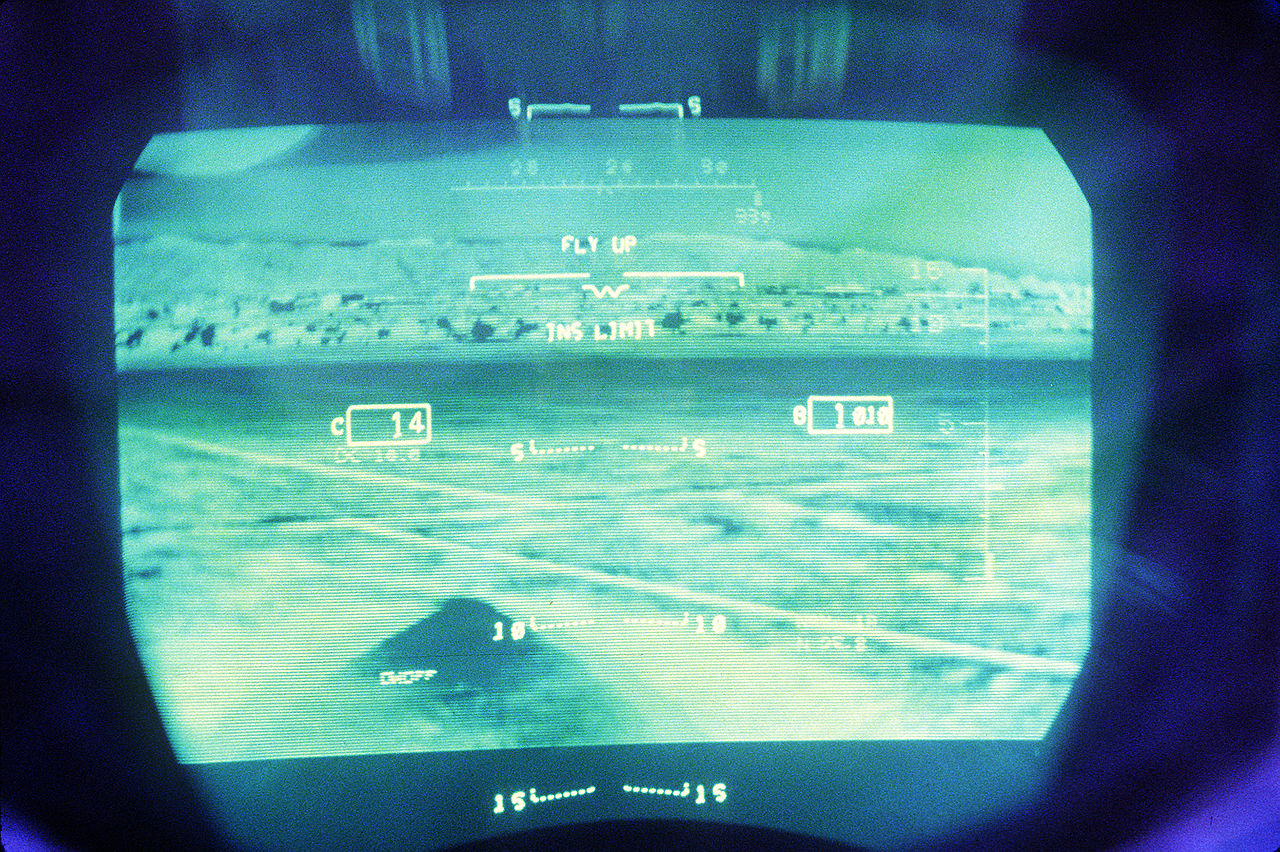
Over time, less reliance on all-weather, low-altitude penetration tactics and the widespread use of night vision goggles by fighter crews, along with advanced navigational upgrades and standoff weaponry, has put less of premium on the capability the AN/AAQ-14 provides. For F-15E crews, it is still a highly relevant capability, but for later block F-16 crews, it is added weight for the vast majority of missions or just isn’t needed at all. But that is based on American needs and tactics. Not a foreign military that bets most of its air dominance and attack capabilities on one multi-role fighter.

The novel thing about the Block 60’s IFTS is that it retains all the capability that the LANTIRN system provides and more without having to carry a big second pod on the F-16’s other intake station. The lump on the Block 60’s nose and its AESA radar make this possible.
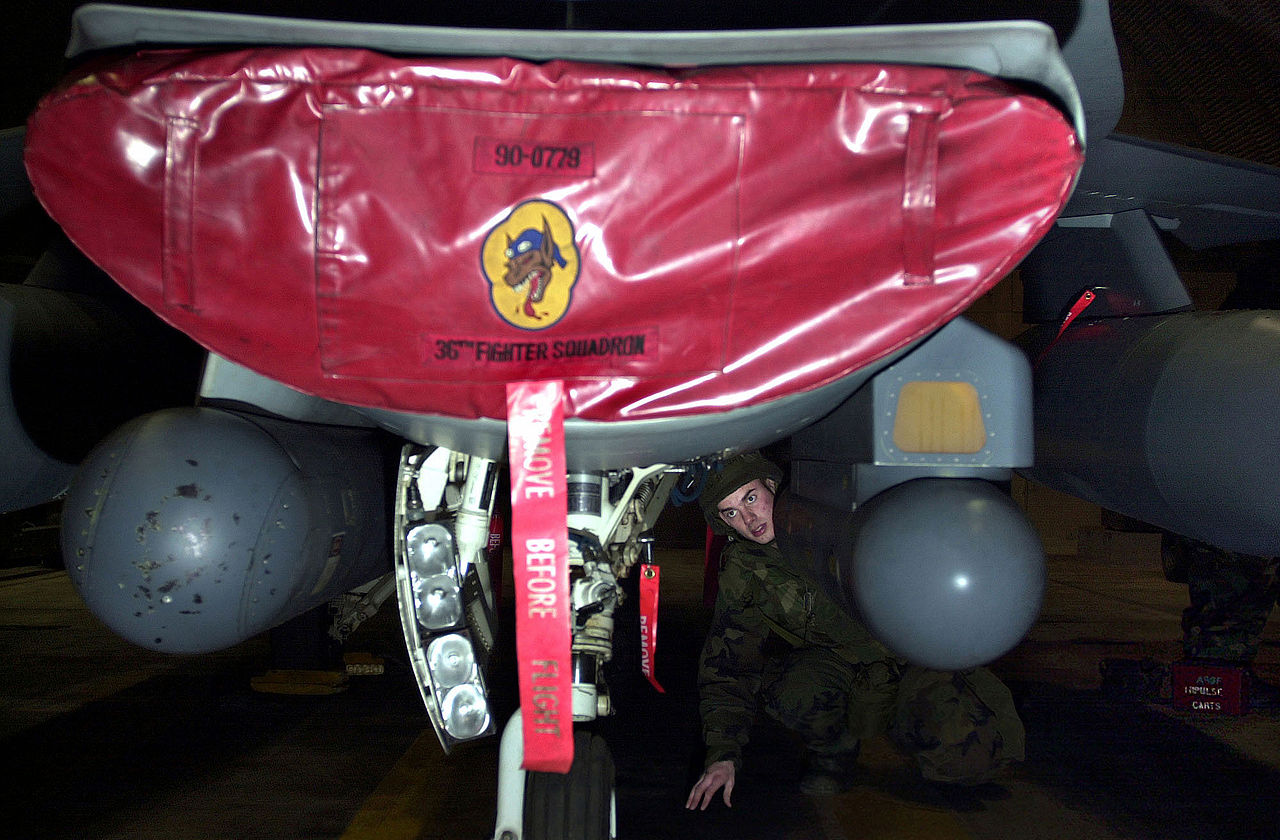
The lump is a FLIR system that rotates around to point directly forward when in use. The video it takes is then piped into the F-16E/F’s pilot’s HUD and it can also be shown on the displays in the rear cockpit of the F model. It doesn’t move around with the pilot’s head position, but it does give them a far better view forward at night and in poor weather. Sources familiar with the system note that it doesn’t project its feed into the pilot’s helmet, but it could in the future. It would still only show in the forward field of view, just like a virtual HUD in advanced helmet mounted displays, like the one found in the F-35.
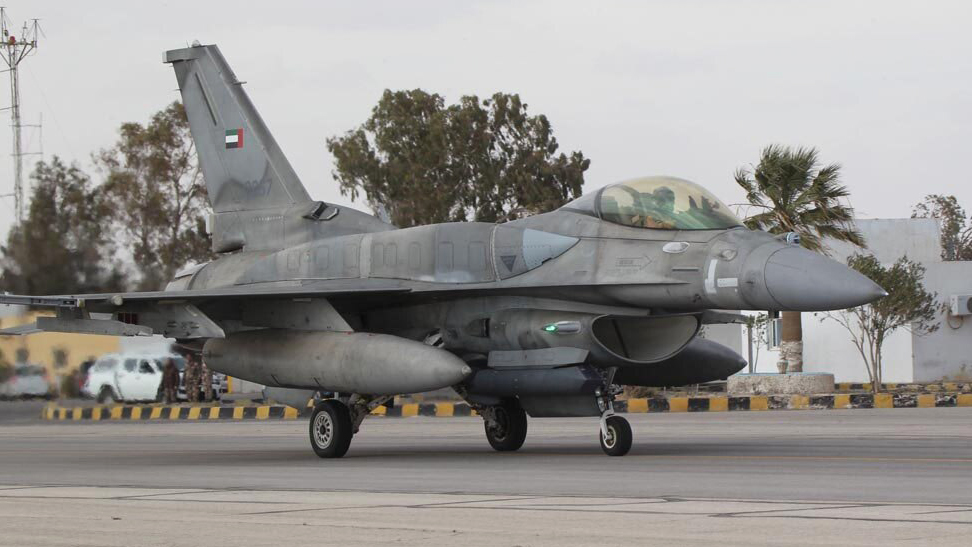
You are probably thinking that the Block 60 is still missing the terrain-following radar functionality that a pod like AN/AAQ-13 provides for all-weather low-level penetration capabilities. The thing about the AN/APG-80 AESA radar—not handcuffed by a mechanically scanned antenna that has to literally point at what it is scanning—is that it can provide this capability seamlessly while executing other modes like air-to-air search and ground mapping. In other words, the addition of the FLIR on the nose and the AN/APG-80 AESA radar has allowed for the F-16E/F to have even better low-level capabilities without the need for a second pod. This saves weight, increasing aerodynamic efficiency, frees up a pylon for other sensors in the future, like an IRST, and saves on maintenance and logistics.
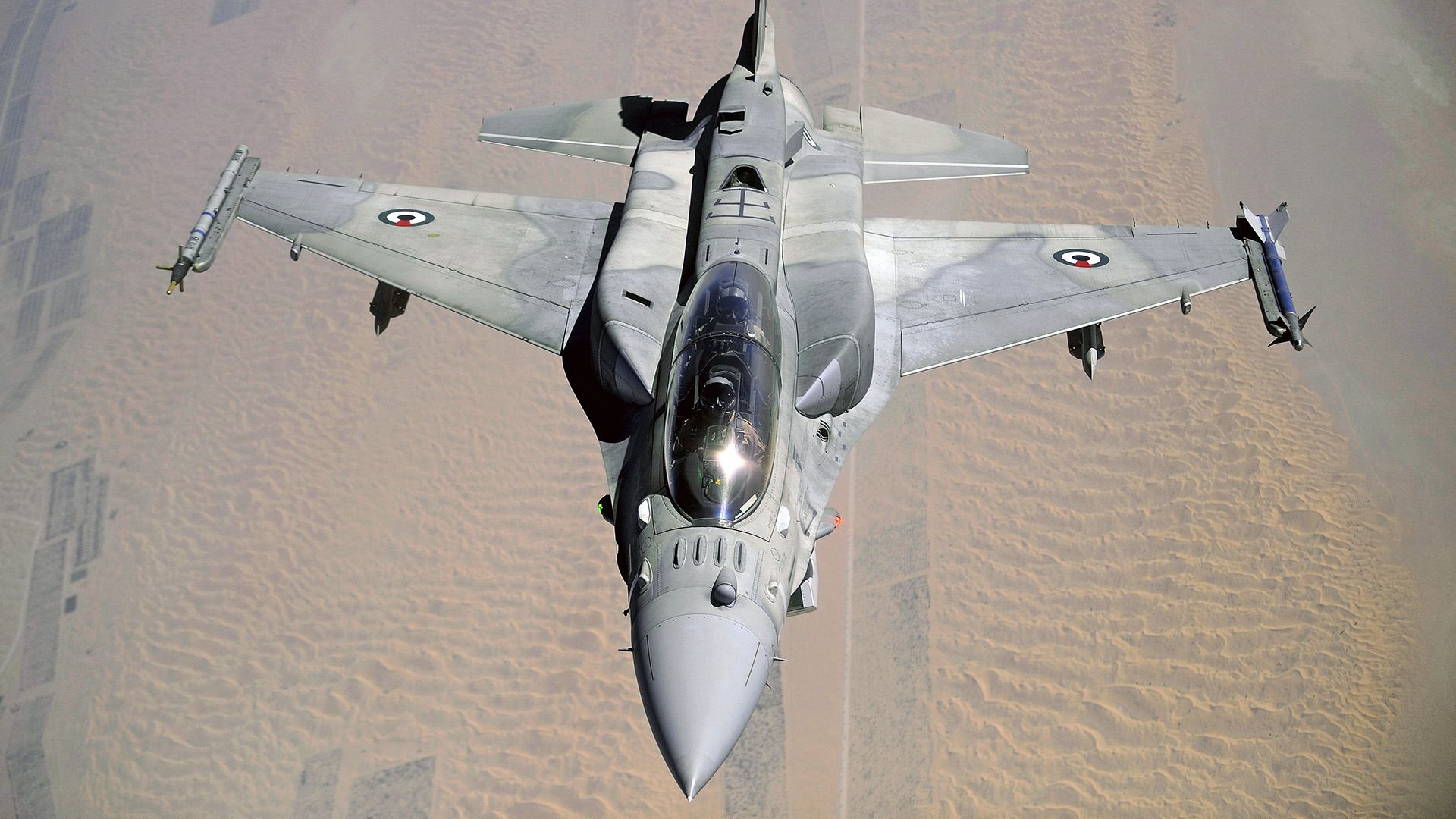
If nothing else, the installation of the navigational FLIR into the Desert Falcon’s nose and its integration with the targeting pod is indicative of just how far the UAE, Lockheed Martin, and its subcontractors went with refining the highly mature C/D into something more exquisite. It is also a clear indication of what capabilities UAE wanted out of its investment into a super-advanced F-16E/F. Having the ability to penetrate into denied airspace at very-low level and in all weather conditions gives the UAE similar capabilities as their Saudi Neighbors that fly F-15 Strike Eagle derivatives.
Combined with the F-16E/F’s advanced defensive suite, these 4.5+ generation fighters are designed with every advantage to survive in contested airspace—aside from stealth. Combined with standoff munitions, like JSOW, SBD, and the Hakim missile, the Block 60 gives the UAE a real ability to reach out and put targets throughout the region in jeopardy.
So, there you have it, now you know what that curious nub is on the nose of UAE’s muscular-looking “Desert Falcons,” which still represent the most advanced operational F-16s in the world.
Contact the author: Tyler@thedrive.com
Update:
Here is the best shot I have seen of the IFTS FLIR out of its stowed position.
